News
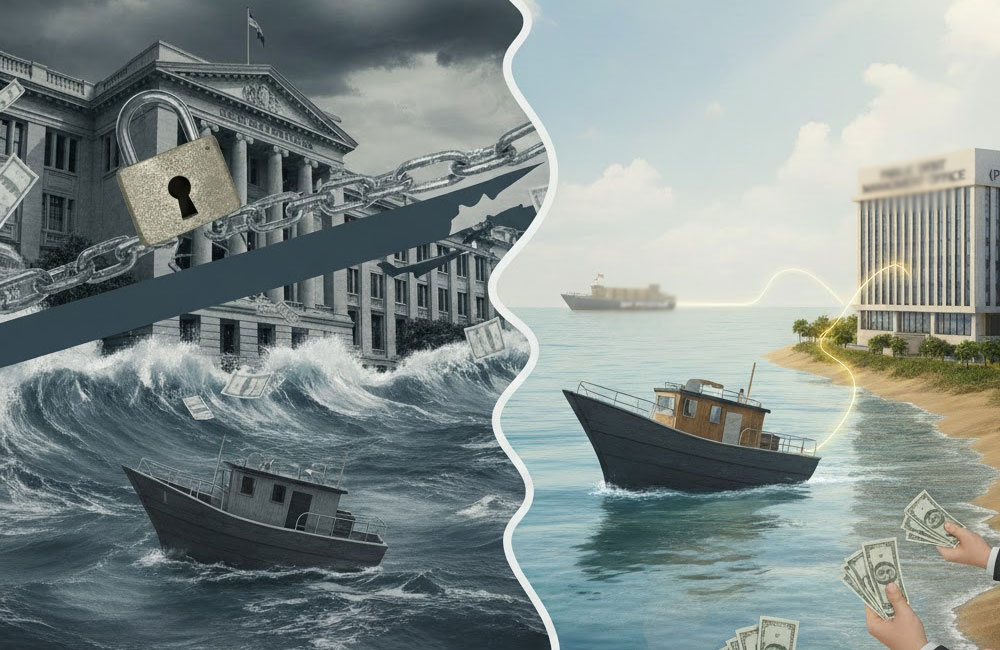
Sri Lanka Tests Post-Default Waters with New Dollar Bond: A Risky Step toward Market Re-Entry
Sri Lanka’s decision to issue a US$50 million Domestic Dollar Bond (DDB) next week marks the country’s first foreign-currency borrowing attempt since the 2022 suspension of external debt payments a move that signals cautious experimentation at a time when the nation remains locked out of the global capital market until at least 2028.
The issuance, managed by the newly established Public Debt Management Office (PDMO), is being framed by authorities as a pragmatic mobilisation of dollars already circulating inside the banking system. Yet the move raises critical questions about sustainability, risk exposure, and the broader roadmap for regaining investor confidence.
The bond auction, scheduled for 3 December, will offer one-, two-, and three-year maturities, with interest rates determined through competitive bidding. Although the minimum investment is set at US$1 million, participation is limited to domestically incorporate licensed commercial banks.Payments will be channelled to the Central Bank of Sri Lanka’s account at the Federal Reserve Bank of New York, signalling an attempt to instil procedural credibility and ensure settlement security.
The Government is attempting to diversify its funding sources after the 2022 default abruptly cut off access to global capital markets. Prior to the default, the country issued Sri Lanka Development Bonds (SLDBs), a mechanism suspended in February 2023 as part of the sweeping economic stabilisation programme.
SLDB holders later exchanged US$791.4 million of outstanding bonds for rupee-denominated Treasury instruments under the Domestic Debt Optimisation (DDO) initiative, a forced restructuring that weakened investor trust in sovereign dollar-denominated paper.
That history casts a shadow over the new DDB, raising concerns about whether banks—already strained by dollar liquidity requirements will view the instrument purely as a patriotic obligation rather than an attractive investment.
The issuance also marks the first major operational test for the PDMO, established in January 2024 under the Public Debt Management Act to centralise all debt-related functions previously split across various agencies.The PDMO’s expanded authority, including direct engagement with primary dealers and the formulation of new regulations, is central to Sri Lanka’s commitments under the IMF programme.
The country’s debt stock remains precarious even after completing 99% of its external restructuring, including International Sovereign Bonds, and restoring market access will depend on demonstrating credible, rules-based debt management.
A key question is whether the DDB represents a genuine borrowing strategy or a temporary measure to bridge near-term foreign-currency gaps. A Central Bank survey in August indicated domestic appetite for up to US$100 million in dollar instruments, prompting authorities to begin with a smaller US$50 million tranche.
While officials frame this as a controlled pilot, analysts caution that excessive reliance on domestic dollar borrowing could create fresh vulnerabilities, especially if foreign-currency inflows fall short of expectations.
The Government’s broader challenge is balancing short-term liquidity needs with long-term market credibility. Issuing a dollar bond domestically may help stabilise cash flows, but its success will ultimately depend on transparent execution, predictable repayment capacity, and whether investors interpret it as a sign of gradual recovery or a signal that external financing pressures remain unresolved.
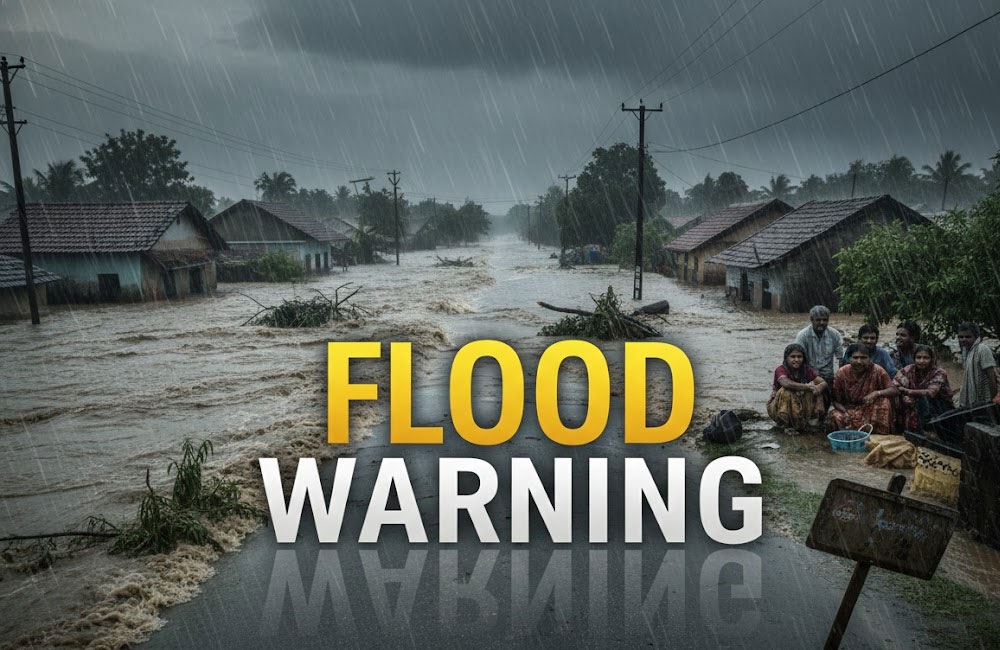
Irrigation Department Alerts Public to High Flood Risk as Heavy Rains Intensify
The Irrigation Department has issued an alert warning of a heightened risk of flash floods in several parts of the country as heavy rains persist. According to the department, a low-pressure system near the South Andaman Sea is expected to trigger rainfall exceeding 200 mm across six provinces.
The advisory highlights the increased likelihood of severe rainfall in the Northern, North Central, Eastern, Southern, Uva, and Western Provinces, while other regions may also experience notable downpours.With the threat of flooding expected to continue from today (25) through November 30, authorities urge residents living in low-lying areas near river basins, as well as travelers passing through these zones, to exercise caution and stay alert to weather updates.

Sri Lanka’s Silent Billionaire Tax Cartel Thrives Unchecked
Sri Lanka’s long-running tax evasion crisis has taken a sharper turn this year, raising concerns that a powerful cartel of billion-rupee defaulters is operating with near-total impunity. Despite repeated pledges by successive governments including the current administration to eliminate corruption and illicit wealth, evidence points to a widening gap between political promises and enforcement.
Former Minister Patali Champika Ranawaka recently reignited public debate by revealing staggering figures: 4,570 individuals owe more than Rs. 100 million each in unpaid taxes, while 90 ultra-wealthy individuals have liabilities exceeding Rs. 1 billion.
According to him, no prosecutions have been initiated against these top-tier defaulters under the current president. Instead, the government has pursued minor infractions such as distributing spectacles or publishing advertisements a move critics describe as selective enforcement.
These revelations come at a time when Sri Lanka is under heightened IMF pressure to boost revenue. By mid-2025, Public Finance Lanka reported that defaulted taxes at the Inland Revenue Department (IRD) surpassed Rs. 1 trillion, the highest in Sri Lankan history. This marks a 22% increase over the first ten months of 2024, signalling that tax leakage is accelerating.
Economic experts warn that the brunt of the crisis is borne by ordinary taxpayers. New VAT hikes, broadened PAYE coverage, and indirect levies are increasingly imposed to fill the gap created by high-value tax evaders. Meanwhile, business lobbies representing casinos, real estate, and high-end imports sectors historically associated with tax irregularities continue operating without fear of prosecution.
Even more alarming is the banking sector revelation. Ranawaka claims that individuals and companies who defaulted on Rs. 700 billion in loans from state banks continue to function without scrutiny. In most countries, such defaults would trigger criminal investigations and asset freezes. In Sri Lanka, however, these defaulters reportedly continue to enjoy political patronage.
Authorities maintain that they are taking corrective measures. In July 2025, the IRD initiated criminal investigations into VAT evasion and launched asset seizures targeting companies with multi-billion rupee arrears. President Anura Kumara Dissanayake announced structural reforms to the IRD, Customs, and Excise Departments and disclosed that he holds a list of 200 major tax evaders who collectively owe Rs. 100-150 billion.
However, critics argue these measures are insufficient. Legal delays, weak audit systems, insufficient digital monitoring, and entrenched political influence have created a system where wealthy tax evaders thrive, while smaller entities face disproportionate enforcement.
Unless Sri Lanka musters the political courage to prosecute the wealthiest offenders not merely highlight them the country risks further fiscal instability. For now, the billionaire tax cartel remains firmly protected, draining state coffers as the public continues to bear the burden.
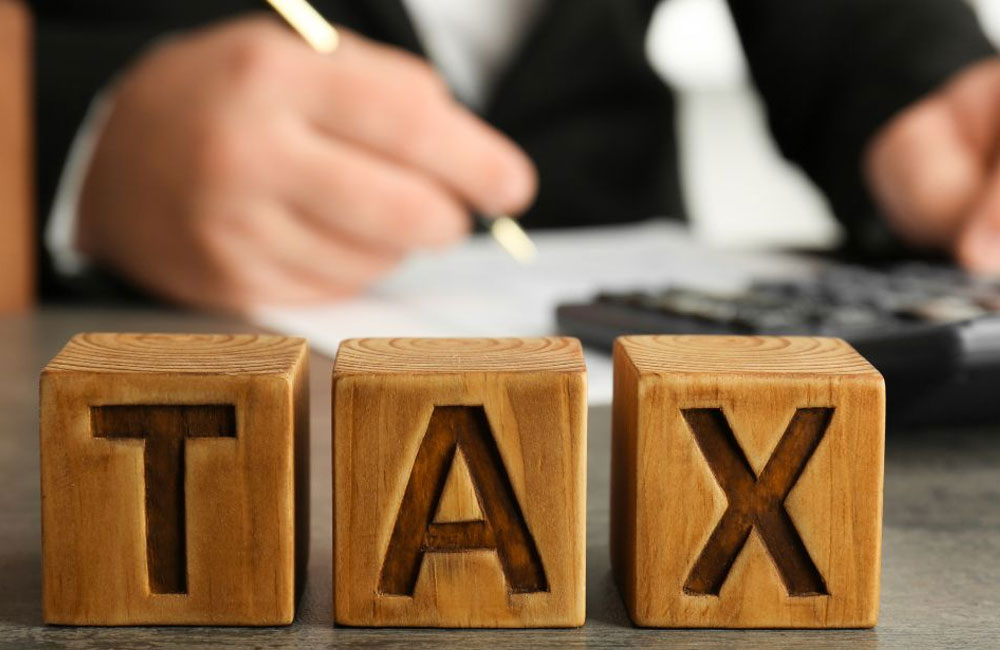
IRD Records 200,000 New Taxpayers as Revenue Hits Historic High
The Inland Revenue Department (IRD) has announced a significant rise in taxpayer registrations, confirming that 200,000 new taxpayers have been added so far this year. In addition, 18,000 new companies have joined the tax system within the same period, according to Commissioner General Rukdevi Fernando.Addressing the media at the Government Information Department, Fernando noted that the IRD was assigned a revenue target that is 18% higher than last year. Despite the heightened goal, the department has already surpassed expectations.
She revealed that the IRD achieved its largest-ever weekly revenue collection recently, pushing total earnings past the Rs. 2 trillion mark. “To date, revenue collections stand at Rs. 2,080 billion,” she stated
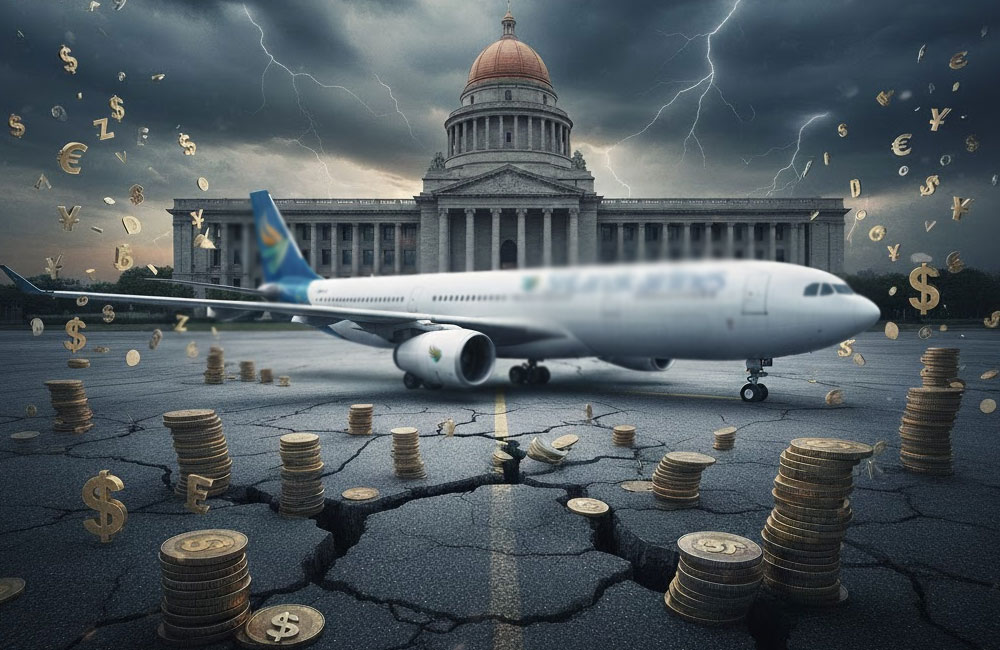
SriLankan Bailout: Taxpayers Shoulder Massive Debt Burden Risks
Sri Lanka’s national airline is once again at the center of a costly financial rescue, with taxpayers poised to inject nearly Rs. 100 billion over the next five years to stabilize SriLankan Airlines, officials revealed. Of this, Rs. 25 billion will be pumped in during 2025 alone, raising concerns over the sustainability and economic impact of maintaining the state-owned carrier.
Deputy Treasury Secretary A.K. Seneviratne informed the Parliament’s Committee on Public Finance that the funds will be allocated as equity to cover sovereign-guaranteed bank loans, without accounting for additional costs linked to bond repayments. The Treasury currently backs loans totaling Rs. 50.675 billion, primarily from state banks including Peoples Bank and Bank of Ceylon.
The airline’s liabilities include approximately USD 210 million in foreign currency loans and around Rs. 30 billion in domestic rupee credits. These obligations are set for restructuring before the end of 2025, with repayments planned over five years, averaging Rs. 20 billion per year. Interest rates on rupee loans, previously as high as 16%, will be reduced to the Sri Lanka Standing Lending Facility (SLFR) +1%, while USD loans with interest near 10% will be lowered to roughly 6%. Seneviratne explained that the initial “day-one” loss of nearly Rs. 13 billion will offset the reduction in interest rates.
Treasury officials emphasized that the restructuring follows months of negotiations to comply with central bank regulations aimed at ensuring bank solvency. “Similar measures were applied in energy sector loan restructures,” said Damitha Rathnayake, Additional Director General of Treasury Operations.
Despite these interventions, the airline’s chronic financial fragility continues to draw criticism. Committee Chairman Harsha de Silva described the carrier as a “black hole” for public funds, noting that it has operated without a chief executive for the past eight months. Historical precedent underscores the pattern: SriLankan has repeatedly received capital injections, including a USD 500 million equivalent in 2011, and USD 150 million in 2020, yet profitability remains elusive.
Compounding the challenge, Sri Lanka’s currency depreciation from roughly Rs. 120 per USD in 2011 to Rs. 308 today has inflated the cost of dollar-denominated loans, increasing losses on foreign debt. Additionally, the airline owes over USD 200 million in sovereign-guaranteed bonds and interest arrears to foreign investors, with a preliminary restructuring deal offering a 15% haircut.
Economists warn that continued reliance on taxpayer support for SriLankan Airlines diverts public resources from critical development priorities, while creating fiscal risks if losses persist. With successive capital injections failing to secure long-term stability, questions remain over whether the government can sustainably maintain the carrier without jeopardizing broader economic health.

Two Arrested for Alleged Rs. 35 Million Wi-Fi Equipment Scam
Two individuals have been taken into custody by the Financial Crimes Investigation Division (FCID) in connection with a financial fraud exceeding Rs. 35 million. Police said the pair allegedly deceived a private company by claiming they could provide Wi-Fi antennas, collecting approximately Rs. 36.99 million without delivering any equipment.
The suspects were summoned to the FCID on the 24th, where they were arrested following the recording of their statements. The men, aged 34 and 37, reside in Mattakkuliya and Wattala.They were produced before the Nugegoda Magistrate’s Court and were ordered to be remanded until December 05. The FCID has launched further investigations into the matter.

Gold Prices Surge in Sri Lanka Following Global Market Increase
Gold prices have climbed again in Sri Lanka, mirroring a notable rise in the global market. As of today, the international gold price has increased by USD 4,150, prompting a local surge.According to market reports, the price of a 22-carat gold sovereign at Colombo’s Pettah market rose to Rs. 309,200, up from Rs. 303,600 yesterday. Meanwhile, a 24-carat sovereign, previously priced at Rs. 330,000, now costs Rs. 336,000.
Traders attribute the increase to ongoing global market fluctuations, which continue to impact local gold rates, making today’s price surge one of the more notable recent changes in the Colombo gold market.

Met Department Warns of 100mm Rainfall in Several Provinces
The Department of Meteorology has warned of a significant increase in rainfall over the coming days, as a low-level atmospheric disturbance near Sri Lanka continues to develop.According to the Department, enhanced showery conditions are expected particularly in the Northern, North-Central, Eastern, and Uva Provinces starting today (25). Most areas of the island will experience overcast skies throughout the period.
Frequent showers or thundershowers are likely in the Northern, North-Central, Eastern and Uva Provinces, as well as the Hambantota and Matale districts, while other regions can expect rainfall mainly after 1:00 p.m.
Meteorologists caution that rainfall exceeding 100 mm may occur in parts of the Eastern, North-Central, Uva, and Southern Provinces, with fairly heavy falls above 75 mm possible elsewhere.Additionally, gusty winds around 40 km/h are expected at times in the Northern Province and Trincomalee district.
The public is advised to remain vigilant and take necessary safety measures to minimize risks associated with strong winds and lightning during thundershowers.
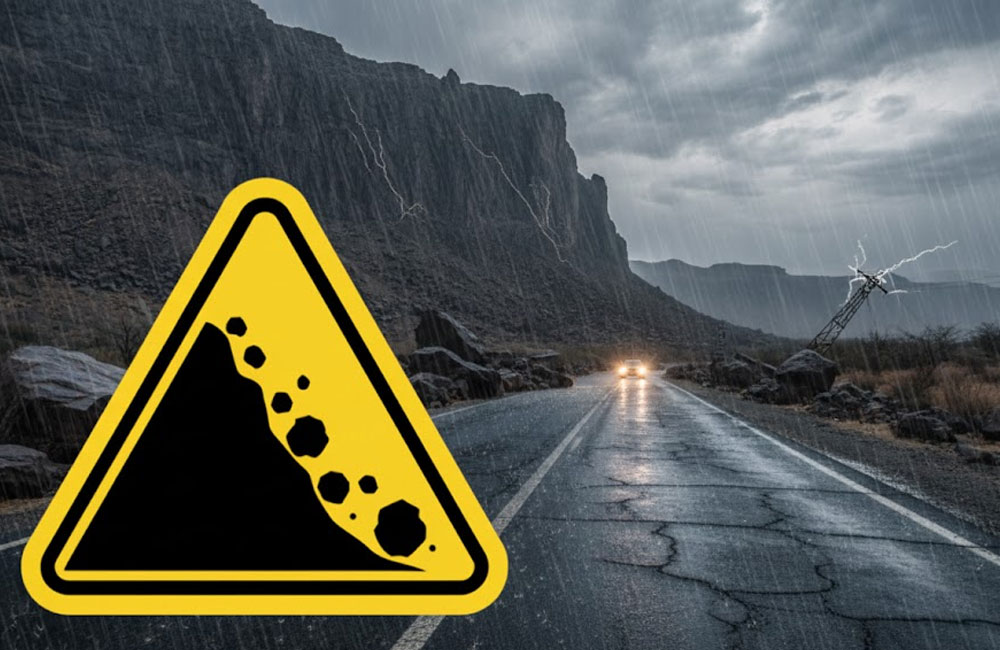
15,000 Families Living in High-Risk Landslide Zones, NBRO Warns
The National Building Research Organisation has raised serious concerns about the growing number of people living in landslide-prone regions, revealing that nearly 15,000 families reside in 250 high-risk zones across the country. These include 230 identified landslide areas and 20 rockfall locations, putting thousands in danger.NBRO officials noted that a significant portion of these risk zones include illegal constructions and informal settlements, which greatly increase vulnerability. In response, the government is preparing to remove or blast unstable rock formations in selected areas to minimize future disasters. However, such operations would require the temporary evacuation of residents living near schools, hospitals, and key businesses, making the process complicated.
Despite repeated safety warnings, many families continue to stay in these zones due to social ties, financial struggles, and limited relocation opportunities. Authorities estimate that around 60,000 people currently inhabit these high-risk regions.
Senior Geologist Laksiri Indrathilaka of the NBRO cautioned that incidents similar to the Lower Kadugannawa disaster could occur again if preventive action is delayed. He explained that earlier attempts to move affected families failed because suitable land was scarce, and proposed relocation sites did not offer reliable livelihoods. Even government-provided apartment housing was declined by residents.
Indrathilaka added that the NBRO has offered technical guidance to district officials regarding unauthorized construction in dangerous zones. The 13 districts identified as highest risk include Badulla, Kandy, Nuwara Eliya, Ratnapura, Kegalle, Kalutara, Galle, Matara, Hambantota, Gampaha, Monaragala, and Kurunegala.He emphasized that both natural geological changes and human activities continue to intensify the threat of future disasters unless immediate steps are taken.

Canada, India agree to restart trade talks, says Indian government
Canada and India have agreed to restart stalled talks for a new trade deal, the Indian government said, after discussions between the two countries paused following a diplomatic spat two years ago.Prime Minister Mark Carney met with India’s Prime Minister Narendra Modi for a bilateral discussion on the sidelines of the G20 summit in Johannesburg, South Africa.
“The leaders agreed to begin negotiations on a high-ambition Comprehensive Economic Partnership Agreement (CEPA), aimed at doubling bilateral trade to USD 50 billion by 2030,” the statement from India’s Prime Minister’s Office said.
“Prime Minister @narendramodi and I met at the G20 Summit today, and launched negotiations for a trade deal that could more than double our trade to more than (C) $70 billion,” Carney said in a post on X. “India is the world’s fifth largest economy, and that means big new opportunities for Canadian workers and businesses.”
Both sides reaffirmed their longstanding civil nuclear cooperation and noted the ongoing discussions on expanding collaboration, including through long-term uranium supply arrangements, it added.
The restart of talks highlights thawing relations between the two countries as Carney pushes to expand trade ties beyond the U.S., its biggest trading partner.Carney has vowed to double Canada’s non-U.S. exports over the next decade.
Canada paused negotiations for a broad trade pact in 2023 after relations soured when Ottawa accused the Indian government of involvement in the killing of a Canadian Sikh separatist. New Delhi has denied involvement.
Despite the diplomatic row, trade between Canada and India has grown but trade experts say it is quite small relative to the size of India’s economy.
Two-way goods and services trade touched about C$31 billion ($21.98 billion) in 2024, largely in Canada’s favor due to its C$16 billion in services exports. In contrast, Canada’s total bilateral trade with China was almost four times bigger in 2024.
Relations between Canada and India began to improve following Modi’s meeting with Carney on the sidelines of the G7 summit in June.
Earlier on Sunday, Carney said he considers India a reliable trading partner, although he acknowledged there could be some “source of friction.”
He said Canada and India have a strong commercial relationship and he would be keen to scale that up.
“What we’re looking to do is to put that (commercial relationship) on a sound footing through a potential trade agreement between the two countries, which gives protections to our businesses, protections to Indian businesses, a clear set of rules, dispute mechanisms, and others, and build on those opportunities.”
Carney also met with Brazilian President Luiz Inácio Lula da Silva at the G20 summit and the leaders agreed to intensify negotiations on a Canada-Mercosur free trade agreement. Mercosur includes Brazil, Argentina, Paraguay and Uruguay.
( source : adaderana.lk)

Reports Highlight Critical Gaps in Mental Health Services for Sri Lankan Youth
New research has raised concerns over the growing mental health burden in Sri Lanka, revealing that 19.4% of the country’s population is affected by depression. This figure is significantly higher than the 16.1% average reported across other Asian nations, according to a joint study carried out by the Universities of Peradeniya and Kelaniya.The 2023 study further highlights that depression is particularly widespread among young people, with an estimated 39% of individuals aged 10 to 24 years experiencing the condition.
Additional findings published by the Royal College of Psychiatrists through Cambridge University underscore the strain on the country’s mental health system. Only 34% of healthcare institutions have a medical officer trained in mental health, while just 38% have a trained nursing officer, pointing to a substantial shortage of qualified professionals.
The report stresses the need for immediate improvements in youth mental health services, noting that a notable portion of those under 19 report serious emotional distress and experiences of interpersonal violence. Strengthening support systems, the study indicates, is crucial for safeguarding young people’s well-being.
Researchers also point to emigration as a contributing social factor, with Sri Lanka losing around 200,000 people each year. Since 75% of migrating women are married and many leave children behind, the report notes that the emotional impact on these children can be significant, increasing their vulnerability to mental health challenges.
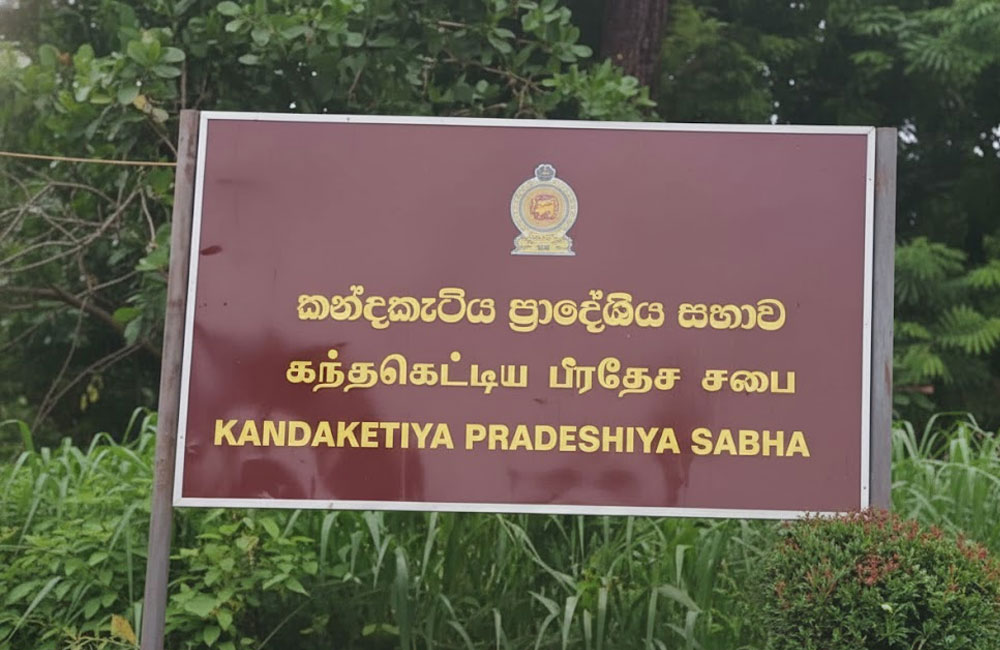
Kandaketiya PS Budget Rejected for Second Time Despite NPP Support
The 2026 budget of the Kandaketiya Pradeshiya Sabha, administered by the National People’s Power (NPP), was defeated for the second time this morning .The budget, re-submitted by Chairman Harsha Ratnayake without any revisions, received unanimous backing from all six NPP members in the council.
However, councillors representing other political parties voted collectively against it. Four members of the Samagi Jana Balawegaya (SJB), two from the Podujana Eksath Peramuna, two from the Sri Lanka Podujana Peramuna (SLPP), one from the United National Party (UNP), and one member of the Sarvajana Balaya opposed the proposal.
With the opposing side securing a four-vote majority, the Kandaketiya Pradeshiya Sabha budget was once again defeated at its second reading.
Page 4 of 614